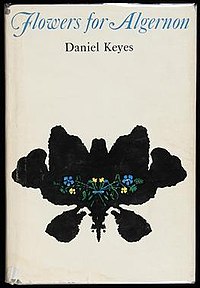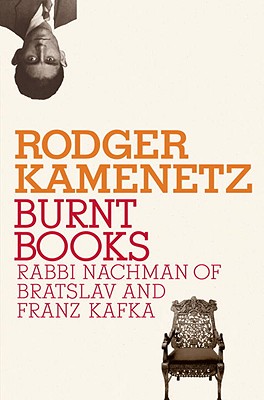STRUCTURALISM:
In literary theory, structuralist criticism relates literary texts to a larger structure, which may be a particular genre, a range of intertextual connections, a model of a universal narrative structure, or a system of recurrent patterns or motifs. Structuralism argues that there must be a structure in every text, which explains why it is easier for experienced readers than for non-experienced readers to interpret a text. Hence, everything that is written seems to be governed by specific rules, or a "grammar of literature", that one learns in educational institutions and that are to be unmasked.
A potential problem of structuralist interpretation is that it can be highly reductive, as scholar Catherine Belsey puts it: "the structuralist danger of collapsing all difference." An example of such a reading might be if a student concludes the authors of West Side Story did not write anything "really" new, because their work has the same structure as Shakespeare's Romeo and Juliet. In both texts a girl and a boy fall in love (a "formula" with a symbolic operator between them would be "Boy + Girl") despite the fact that they belong to two groups that hate each other ("Boy's Group- Girl's Group" or "Opposing forces") and conflict is resolved by their death. Structuralist readings focus on how the structures of the single text resolve inherent narrative tensions. If a structuralist reading focuses on multiple texts, there must be some way in which those texts unify themselves into a coherent system. The versatility of structuralism is such that a literary critic could make the same claim about a story of two friendly families ("Boy's Family + Girl's Family") that arrange a marriage between their children despite the fact that the children hate each other ("Boy - Girl") and then the children commit suicide to escape the arranged marriage; the justification is that the second story's structure is an 'inversion' of the first story's structure: the relationship between the values of love and the two pairs of parties involved have been reversed.
Structuralistic literary criticism argues that the "literary banter of a text" can lie only in new structure, rather than in the specifics of character development and voice in which that structure is expressed. Literary structuralism often follows the lead of Vladimir Propp, Algirdas Julien Greimas, and Claude Lévi-Strauss in seeking out basic deep elements in stories, myths, and more recently, anecdotes, which are combined in various ways to produce the many versions of the ur-story or ur-myth.
There is considerable similarity between structural literary theory and Northrop Frye's archetypal criticism, which is also indebted to the anthropological study of myths. Some critics have also tried to apply the theory to individual works, but the effort to find unique structures in individual literary works runs counter to the structuralist program and has an affinity with New Criticism.
SOURCE: http://en.wikipedia.org/wiki/Structuralism
A theory of literature that focuses on the codes and conventions that undergird all discourse and on the system of language as a functioning totality. This system Ferdinand de Saussure calls langue, "the whole set of linguistic habits which allow an individual to understand and to be understood." Anticausal and antiphilological, structuralism deliberately ignores the historical origins of the various elements of language, the external context of linguistic acts, the agents who use language, and the individual speech acts themselves (parole). Structuralism sees language as a system of differences without any positive terms, embraces the arbitrariness and conventionality of the sign, brackets any consideration of the referent, and generates a vocabulary of oppositions, all of which are more or less synonymous: langue and parole, synchrony and diachrony, system and event, signifier and signified, code and message, metaphor and metonymy, paradigm and syntagm, selection and combination, substitution and context, similarity and contiguity. In each case the first term is privileged.
SOURCE: http://www.library.utoronto.ca/utel/glossary/Structuralism.html
SYNOPSIS:
The story starts in Spanish Guinea with a Frenchman on
vacation, who finds a man named Toundi. He has been injured and soon dies. The
Frenchman finds his diary, which is called an "exercise book" by
Toundi. The rest of the story is of the diary (exercise book) that the
Frenchman is supposedly reading. There is no further discussion of the
Frenchman after this point.
The first "exercise book" starts with Toundi
living with his family. His father beats him constantly, and one day he runs
away from his home. He runs to the rescue of Father Gilbert, a priest who lives
nearby. His father comes back for him, telling Toundi that everything will be
alright if he comes back. He denies his father's offer and after this point he
no longer acknowledges his birth parents.
Toundi treats Father Gilbert as his new father. Father
Gilbert teaches Toundi to read and write, and he teaches Toundi about
Catholicism. Toundi believes in Catholicism, but as the story progresses he
drifts from his beliefs until the end, when he does not believe in God.
Father Gilbert dies in a motorcycle accident a few months
after meeting Toundi. Toundi is eventually taken to live with the Commandant,
the man in charge of the surrounding colony. He serves as the houseboy for the
Commandant, and later Madame, the Commandant's wife. It becomes very clear that
the events that go on in the house are more important to Toundi than his own
life.
After about six months since Toundi comes to live with the
Commandant, Madame, the Commandant's wife arrives from France. She initially is
a warm and caring woman, who is very beautiful. She catches the eye of almost
every man in town, much to the Commandant's dismay.
Soon after Madame arrives the Commandant leaves to go on
tour again. Toundi is left with Madame to take care of the house. As time goes
on, Madame becomes more and more hostile and disrespectful towards Toundi. When
the Commandant returns, she is portrayed as a ruthless woman. While the
Commandant was still on tour, it becomes obvious that she is bored with her
life. She begins to have an affair with M. Moreau, the man in charge of the
prison. M. Moreau is perceived to be ruthless against the Africans. One of
Toundi's first experiences with M. Moreau had him whipping two other Africans
nearly to death.
The Second Exercise book begins.
The Commandant returns from touring, and it is later
discovered that he knew about his wife's affair and returns because of it. The
Commandant has a terrible argument with her, but after a few days they are
getting along again.
Madame becomes very disrespectful towards Toundi, partly
because she does not like being there anymore, but mostly because she knows
that he knew about her affair. Sophie, the lover of the water engineer is
accused of stealing his workers' salaries with the help of Toundi. He is taken
to prison where he is tortured in order to confess a crime he had not
committed.
Toundi is held in a hut near the police headquarters.
Fortunately he has a friend who works there named Mendim, who is described as a
very muscular man. He is feared by most other people but he soon comes to be
known as Toundi's ally. M. Moreau orders Mendim to beat up Toundi, but Mendim
throws ox's blood on him to make it look like he is injured. They spend the
rest of the day playing cards.
Toundi becomes sick and Mendim takes Toundi to the hospital.
They have to wait a very long time to see a doctor because the black doctor is
the only doctor there, the other white doctor was promoted to captain. The
doctor finds out that Toundi's ribs are broken and have punctured his bronchi.
While still at the hospital, while Toundi is in a dazed
state, M. Moreau returns with the white doctor. He talks about punishing Toundi
some more. At this point, after M. Moreau has left, Toundi escapes the
hospital, and heads to Spanish Guinea, which is where he was first introduced
in the beginning of the novel.
SOURCE: http://en.wikipedia.org/wiki/Houseboy_(novel)
ANALYSIS:
The story is all about the life and sufferings of Toundi written on his diary. The entire text has unity. At first we can see that he is a battered child. His father beats him everyday that's why he ran away. Then met Father Gilbert who loved him so much but later die. Then, he found himself working with the Commandant and discovered how injustice his wife is. As a whole, the narrative depicts the tragedy of cultural colonialism. At other points we can also see colonial injustice, abuse and torture and exploitation.


